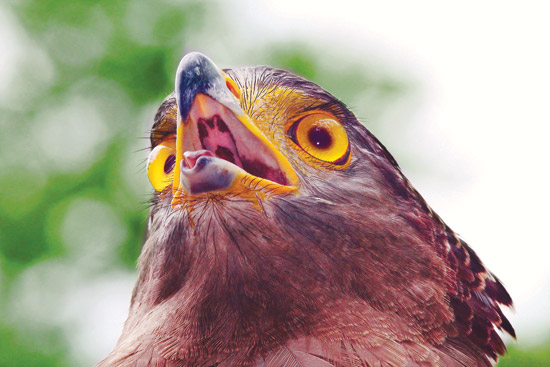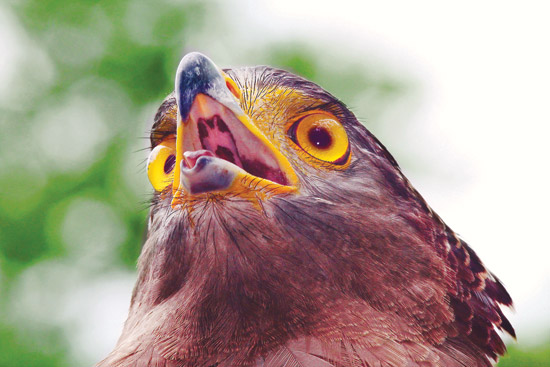(No.4, Vol.3, May 2013 Vietnam Heritage Magazine)
At one time, nightingales, skylarks, and magpie-robins were very popular among bird fanciers in Hanoi, but those birds are now ‘trivial’ in the eyes of many falconers. At present, only eagles, which are known for being ‘the king of birds’, are believed to be able to demonstrate supremacy, prowess and prestige. Some wealthy men even hire professional staff to take care of and train this imperial species for hunting game.
With their wild, proud nature, eagles are listed as one of the most difficult to breed. Few aviculturists are capable of taming and training the bird to follow their orders and be able to prey skilfully.
Mr Hoang Van Hung, a keen bird enthusiast in Hanoi, said: ‘Eagle falconry is an impressive and riveting hobby.’ He added that many people considered eagles as ‘patron saints’ or ‘guardians’ of health and thriving. Seeing the birds’ speed, assertiveness and power, and that no prey could escape from their talons, some hobbyists bought them as guardians to protect their home.
Mr Nguyen Van Quan, a well-known falconer in Hanoi, who currently kept two majestic eagles, said: ‘Eagle falconry has been popular recently because it is believed that eagle is the king of birds, who consumes the spirit of green forest. If you have an eagle in your home, the miasma or evil spirit will perish. Since eagles bring the positive atmosphere of the blue sky and fill your house with it, your business or relationships will be thriving and spanning as wide as eagles’ wings. ‘
On social network forums, netizens also set up a club whose abbreviation is VFA (Vietnamese Falconers’ Association) to exchange information and learn from each other’s experience.

Eagles in the wild in Binh Thuan Province, South Central Vietnam. Photos taken between 2009 and 2010.
Photos: Le Hoai Phuong
According to some members of Eagle Falconers’ Association, the art of eagle falconry is not simple. A member shared his experience: ‘Eagles can be fed on rats, cows, pigs, or fish two to three times per day. But that is for young eagles. Adult eagles should be fed on rabbits, sparrows, and field mice. Beef and pork can also be their food, but they are very expensive.’
Mr Hoang Van Hung, of Hoang Mai District of Hanoi, who currently possesses two eagles that are nearly one-year-old, said: ‘I have to bathe the eagles every morning before taking them outside to enjoy the fresh air. Their food must be clean; the meat must be fresh lean without any fat mixed in, because if fed with fat, they will have diarrhoea, which is very difficult to treat. Cold foods are also to be avoided. After every meal, they must drink sufficient amounts of water.’ His two eagles, weighing more than one kg each, are in a flying practice period. They are fed three meals per day, costing him VND20,000 ($0.95) each. Hung said that in his experience, the birds should not be fed too much, otherwise, they would get sick. Adult eagles should be fed with big lumps of raw meat so that they can clamp their feet into the meat and use their beaks to tear the food so their legs, necks and beaks will be exercised. It is also important to recognize the signs of their thirst; it is when their beaks are open.

When mature, each eagle can weigh up to four – five kg. Some aviculturists use chains to tie their feet on a tree trunk or blocks of wood, others make a barn up to two metres in height, with the bottom covered with sand so that the eagle’s claws are not broken when landing or wriggling violently. In order to be able to hold the eagles or let them perch on their shoulders or upper arms, many falconers have special leather gloves to protect themselves from the bird’s claws.
The price of young eagles, about six – seven months old, is about VND10 million ($476).
After two years of age, eagles become more precious and expensive than chicks.
The male eagles are often larger, brawnier, braver and also more expensive than the female ones.
,,
,,

